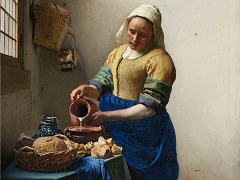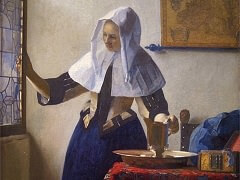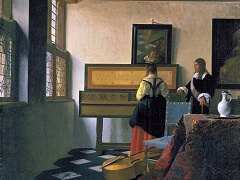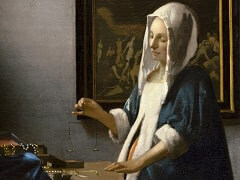The Procuress, 1665 by Johannes Vermeer
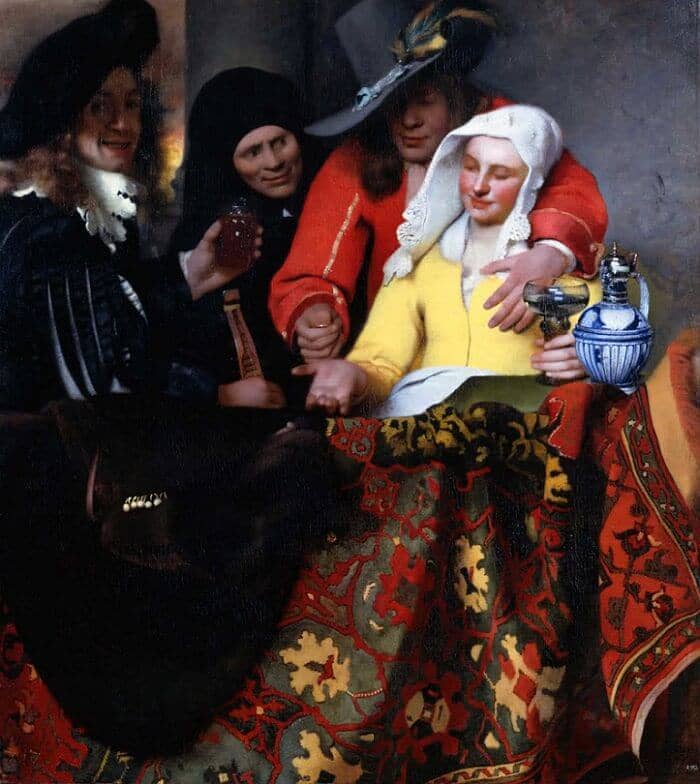
Few of Vermeer's paintings are as provocative as this fascinating scene of mercenary love, which, in its subject, as well as in its momentary gestures and expressions, seems to differ from his earlier biblical and mythological scenes. Here, behind a balustrade covered by a richly decorated rug, a procuress looks approvingly at a soldier, who offers a young woman a coin while fondling her breast. Holding a glass of wine in one hand, she willingly accepts his proposition with her other.
Vermeer was apparently inspired to paint this subject by Dirck van Baburens, The Procuress, a painting that Maria Thins owned and that Vermeer depicted in two of his works. Nevertheless, Vermeer's painting may have biblical allusions. On the left, an elegant dandy, dressed in a beret and a fashionable slit-sleeve jerkin, smiles out at the viewer as he holds aloft a glass and grasps a musical instrument. This dimly lit figure is probably a self-portrait, with Vermeer assuming the guise of the Prodigal Son, a role many seventeenth-century artists, including Rembrandt, played in depictions of merry company scenes.
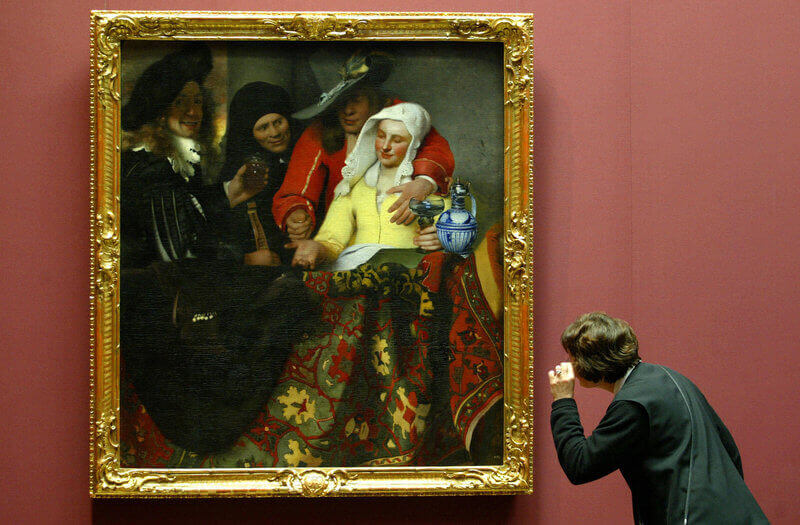
This painting is the first instance in which Vermeer strove for a sense of realism through his painting techniques. For example, he used thick impastos to convey the rough texture and three-dimensional character of the ceramic wine pitcher.



